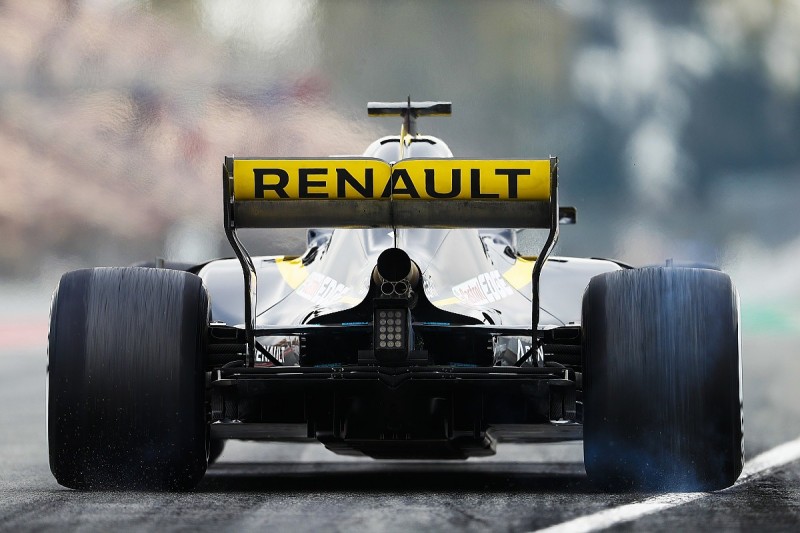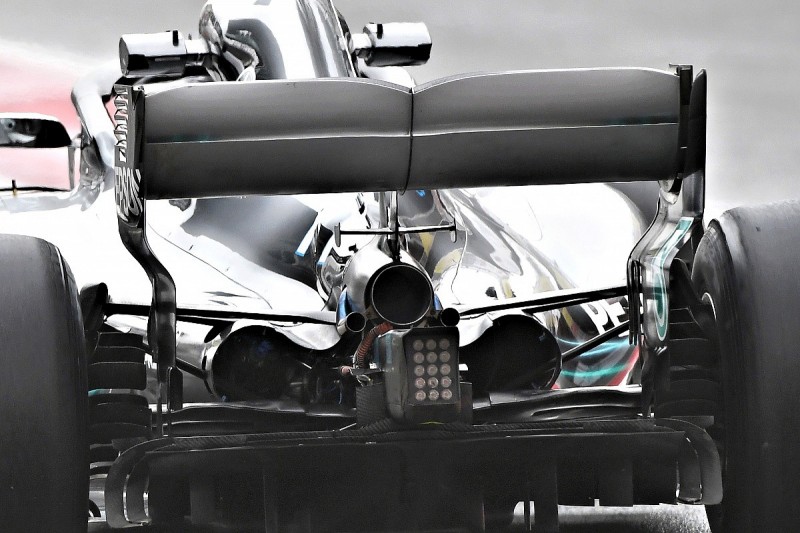How F1 teams are getting around rules on exhaust-blown aerodynamics
Formula 1's move to ban monkey seats and change the rules regarding exhausts for 2018 was meant to close off potential benefits from blowing wings with exhaust gases

However, the latest car designs and concepts that emerged in pre-season testing last week have shown that teams have not given up in pushing hard to keep hold of performance gains in this area.
Elements seen on the Renault, McLaren, Mercedes and Williams all appear to show that designers are doing all they can to exploit exhaust blowing, and it could prove to be a fascinating development race between them all in 2018.
Using exhaust gasses to drive aerodynamic performance has been something the FIA has tried to clamp down on over the years.
Although the excesses that we witnessed at the end of the V8 era - when teams were blowing diffusers with complex engine modes - were finally sorted, it is an area that teams have still worked hard on in the turbo hybrid era.
As part of the regulation changes for 2014, which tied into the introduction of the current power units, the FIA specified the use of a single main outlet along the car's centre line, which has subsequently been joined by two wastegate pipes to improve the sound.
Designers then tried to leverage the exhaust gases help drive airflow over the rearward structures.
This was achieved primarily with the monkey seat winglets, but with teams concerned about a massive spending war in this area, it was agreed some key changes would be made for this year to deter teams from a new push on exhaust blowing.
The tailpipes exit must now be located 50mm further rearward, while bodywork, such as monkey seat winglets, can no longer be used in the central section of the car at a point more than 20mm forward of the tailpipe.
But teams are already working on alternative solutions.
Renault goes aggressive

Renault has taken perhaps the most aggressive approach , placing the wastegate exhausts directly beneath the main one in a double barrel configuration.
It has also angled up the tailpipes to the maximum tolerance of five degrees to help direct the exhaust gases.
Interestingly, the rear wing's main plane is devoid of its usual painted finish in order that it doesn't get burnt by the exhaust. The team was clearly monitoring what was going on in this area too, as it placed several temperature strips here to get some feedback on how hot things were getting.

Renault has also followed a trend that began last season at Mercedes and Ferrari, where a duck bill winglet is placed on the trailing edge of the crash structure to try to upwash the airflow.
Monkey seat replacements
Little winglets have found their way on to numerous cars this season, but Williams has by far the most intriguing with a mini winglet hung from a small swan-neck support bracket.

The monkey seat in its old format of sitting on top of the crash structure may be dead, but teams have not given up on trying to find something to replace it.
McLaren has mounted a very simplistic single element appendage ahead and above its exhaust, which, like the Renault works team, is also angled upwards.

Mercedes has also pushed some development in this direction, attaching winglets either side of the rear wing support pillar, although its version is furnished with endplates to define the flow too (above).
It will be fascinating to see if there is any push back from the FIA to stop teams throwing ever-more complicated designs in this area, or if the benefits are such that blown wings become one of the key battlegrounds in the 2018 development war.
Be part of the Autosport community
Join the conversationShare Or Save This Story
Subscribe and access Autosport.com with your ad-blocker.
From Formula 1 to MotoGP we report straight from the paddock because we love our sport, just like you. In order to keep delivering our expert journalism, our website uses advertising. Still, we want to give you the opportunity to enjoy an ad-free and tracker-free website and to continue using your adblocker.














Top Comments